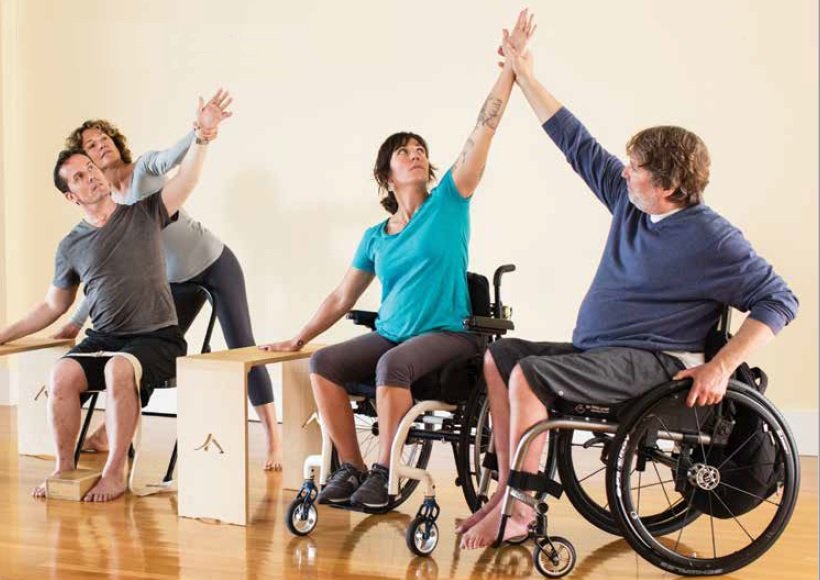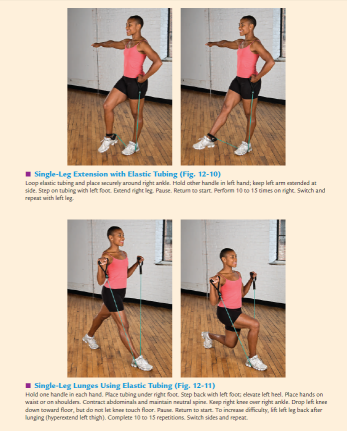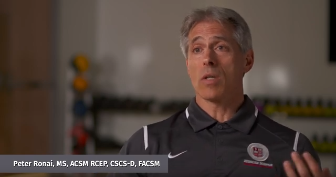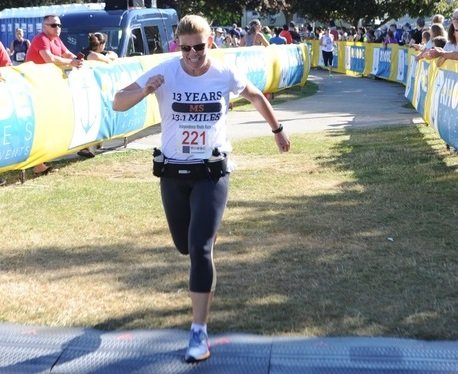Advances in physical rehabilitation of multiple sclerosis
Why is this article of interest?
Exercise has many benefits in and of itself. It can help with physical and mental health and may be appropriate for all ages at the discretion of your healthcare provider. Recent clinical studies in multiple sclerosis suggest that exercise may also help those coping with the disease. While we are only starting to understand how exercise can help with your symptoms of multiple sclerosis, studies so far suggest an encouraging outlook for improving your body’s immune response, protecting healthy cells, and working towards greater mobility. Please note, further research is needed before health care providers will be able to recommend specific courses of physical therapy for specific disabilities. Be sure to reach out to your own health care provider to discuss your options.
When reading this article, take note that physical rehabilitation and exercise are used interchangeably.
What have researchers demonstrated in their findings so far?
In this article, the authors review several studies of the impact of physical rehabilitation among people with multiple sclerosis. What are these findings so far trying to show?
No matter what stage you are in managing multiple sclerosis symptoms, the most up-to-date studies suggest that exercise may have a positive impact not just on those in early stages with few symptoms but may also help those in later stages of the disease. We don’t know how exactly exercise works yet, but current studies suggest a positive connection between exercise or physical rehabilitation and your body.
Furthermore, options for connecting with your healthcare provider to discuss how exercise may be right for you are expanding with telemedicine. This can be a great way for discussing disease-modifying therapy options especially if you are experiencing pain and getting to the doctor’s office is a challenge. Your healthcare provider may be able to virtually assess your condition and design an appropriate therapy technique based on your individual needs. More research is needed, but the area of physical therapy is expanding and may even assist you in later stages of multiple sclerosis.
What to make of these results
So far, researchers have been able to make a few observations through these studies. Even though they do not reveal exactly how exercise works, findings so far suggest a link between exercise and reducing the severity of cellular damage (hence promoting a healthy immune response in the body), exercise and improvements in mental alertness and physical mobility, and even in more severe cases of multiple sclerosis, physical rehabilitation may be an option with advancements in robotics and in telehealth. It is also encouraging that these findings may have further implications on your overall wellbeing. If exercise can help with physical mobility and mental alertness, in doing so it can contribute to connecting to your community.
This analysis of research is not yet conclusive and needs further analysis to translate into clear implications for clinical medicine. Communication is key: speak to your healthcare provider about including exercise in your disease management process.
Original Article
Advances in physical rehabilitation of multiple sclerosis
Current Opinion in Neurology
Centonze, Diegoa,b; Leocani, Letiziac; Feys, Peterd
Abstract
Purpose of review
Multiple sclerosis (MS) is a neurological disorder that heavily affects quality of life (QoL) and demands a multidisciplinary therapeutic approach. This includes multiple protocols and techniques of physical rehabilitation, ranging from conventional exercise paradigms to noninvasive brain stimulation (NIBS). Recently, studies showing the clinical efficacy of physical rehabilitation have remarkably increased, suggesting its disease-modifying potential.
Recent findings
Studies in animal models of MS have shown that physical exercise ameliorates the main disease pathological hallmarks, acting as a pro-myelinating and immunomodulatory therapy. NIBS techniques have been successfully applied to treat pain and urinary symptoms and lower limb function and spasticity, especially in combination with physical rehabilitation. Physical rehabilitation is reported to be well tolerated and effective in improving muscle function and fitness even in more disabled patients, and to enhance balance, walking and upper limb functional movements. Moreover, the dual motor--cognitive task performance can be improved by combined training protocols.
Summary
The literature here reviewed indicates the importance of clinical and preclinical research in addressing the impact of neurorehabilitation on MS disability, highlighting the need of further studies to reach a more comprehensive understanding of the mechanisms involved, the best combination of techniques and the proper timing of application.
INTRODUCTION
In the context of multiple sclerosis (MS), physical rehabilitation, hereafter also referred to as exercise, has long viewed only as a supportive care useful to control symptoms and to prevent further functional worsening and sedentary life-style-related consequences [1]. Recently, the raise of studies showing the clinical efficacy of different forms of rehabilitation have changed our vision of exercise, turning it into a therapeutic rather than a preventive or a symptomatic approach [2,3▪▪,4▪]. Rehabilitation programs are currently fully included in the management of people living with MS (pwMS) [5]. Patients undergoing rehabilitation show a general improvement of quality of life (QoL) and engagement in daily activities [6,7]. Exercise is reported to improve ambulatory performance [8], cardiovascular and neuromuscular functions [9,10], as well as depression [11]. In spite of some inconsistencies among studies [12], cognitive functions seem to be positively influenced by exercise [13]. Only recently, it has been addressed the disease-modifying potential of exercise, evaluating its impact on brain structure and function [14–16], even in combination with inflammatory peripheral markers [17]. Nevertheless, the underlying mechanisms have not yet been clarified.
Physical rehabilitation can be tailored to patient's disability level, making it successfully applied to both relapsing—remitting MS (RRMS) and progressive MS (PMS) [18]. Moreover, the therapeutic portfolio is quickly expanding in terms of technology and possibility of self-administration of exercise protocols. Indeed, conventional rehabilitation, based on active therapeutic exercises of different intensities and modalities, can be performed at home through tele-rehabilitation programs, avoiding the necessity for patients to reach the healthcare facility [19]. In addition to this, several devices for robot-assisted therapy and noninvasive brain stimulation (NIBS) protocols are available, providing different types of ‘passive’ exercises. NIBS procedures are particularly appealing, because of the possibility to activate brain areas involved in specific MS symptoms [20].
Here, we will review the proposed neurobiological mechanisms of action of physical rehabilitation as evidenced in preclinical studies of MS and current advances in both NIBS techniques and conventional rehabilitation.
Box 1: 
NEUROBIOLOGY OF NEUROREHABILITATION AS RECENTLY EMERGED IN ANIMAL MODEL OF MULTIPLE SCLEROSIS
Over the last decades, translational research based on animal models of MS has been instrumental for understanding MS pathophysiological mechanisms, discovering and testing new therapies, including exercise.
In humans, physical rehabilitation implicates a broad spectrum of interventions, which are mainly resistance/strength and endurance training or a combination of the two. Similar protocols as well as behavioral interventions, like voluntary exercise and environmental enrichment, have been tested in experimental MS [21,22]. Following the increasing clinical interest in rehabilitation, the rate of publication on this topic has recently enhanced, expanding from former studies focused exclusively on the most used MS model, the experimental autoimmune encephalomyelitis (EAE), to more recent investigations in demyelinating models.
Data collected so far point to the beneficial effects of exercise on MS pathological processes, including immune dysregulation, demyelination, axonal loss, and neurodegeneration [21,22]. Notably, these results have been gained mainly through a preventive regimen of exercise, whereas MS studies, as elsewhere critically discussed, have been mostly conducted in a ‘late’ therapeutic window and not in early disease phases [4▪]. Such discrepancy between human and experimental studies underlies the importance of deepening the role of exercise in both fields of research.
In EAE, research has mainly focused on the peripheral immunomodulatory activity of exercise. Among others, one study has provided a detailed description of the effects of two protocols of preventive resistance training and endurance training exercise [23]. Of note, a significant increase of markers of T regulatory cells (Tregs) in resistance training mice was shown, suggesting enhancement of immunosuppressive functions. However, the causal relation between exercise-mediated immunomodulation and improvement of neurological disability has been clarified in another study, through a passive immunization protocol [24▪▪,25]. Recipient sedentary mice receiving T cells from donor exercise-preconditioned EAE mice, showed a reduced clinical disability together with attenuated axonal and myelin loss than recipient mice immunized with T cells derived from sedentary donor mice [24▪▪].
In EAE mice undergoing exercise, other MS neuropathological features, like infiltrating immune cells, microgliosis, astrogliosis, and cytokine levels, have been found attenuated, likely as a consequence of peripheral immunomodulation [21,22]. Interestingly, a recent article has first highlighted an axis between brain and peripheral immune function EAE mice during environmental enrichment. This study has demonstrated the leading role of environmental enrichment-induced raises of the brain-derived neurotrophic factor (BDNF) in the hypothalamus, in orchestrating the immunomodulatory activity mediated by the glucocorticoid receptor expressed in thymocytes [26▪▪].
Direct central anti-inflammatory and pro-myelinating effects of exercise have been demonstrated in demyelinating models. Six-week voluntary exercise attenuated astrogliosis, microgliosis, and myelin loss in the corpus callosum and the striatum of mice exposed to cuprizone (CPZ) [27]. Moreover, voluntary exercise induced the proliferation of oligodendrocyte precursor cells (OPCs), their differentiation into oligodendrocytes, and axonal remyelination in mice injected with lysolecithin (LCT), in a mechanism involving activation of the peroxisome proliferator-activated receptor gamma co-activator 1-alpha (PGC1α) in oligodendrocytes [28].
With the above few exceptions, the search for molecular and cellular mechanisms of exercise-beneficial effects has just started and needs further analysis to translate into human studies (Fig. 1).
FIGURE 1:

Proposed mechanisms involved in physical exercise in experimental multiple sclerosis. Different protocols of physical exercise have been tested in animal models of MS. Despite the lack of a comprehensive analysis, data indicate the occurrence of two main mechanisms activated by exercise, namely a direct effect on the brain and an immunomodulatory activity in peripheral organs, like thymus, spleen, and lymph nodes. Both mechanisms influence each other (see double arrow in the figure), but most of the findings suggest that modifications in brain disease is downstream to peripheral immunoregulatory effects. Exercise positively shape immune response in animal models of MS, by reducing the levels of T-helper type 1 cells (Th1) in favor of Treg and by attenuating the dysregulated activation of antigen-presenting cells (APCs). At brain level, this translates into attenuated neuroinflammation, with reduced astrogliosis and microgliosis, improved remyelination and neuroprotection. MS, multiple sclerosis.
NONINVASIVE BRAIN STIMULATION AND NEUROREHABILITATION IN MULTIPLE SCLEROSIS
NIBS, mainly repetitive transcranial magnetic stimulation (rTMS), magnetic theta burst stimulation (TBS) and transcranial direct current stimulation (tDCS), have been widely applied to treat several symptoms in pwMS [29]. Although all these techniques have the potential to affect brain excitability in both directions (excitatory and inhibitory) according to stimulation parameters, studies addressing MS symptoms or deficits have used only excitatory NIBS, for example, high-frequency rTMS, intermittent TBS (iTBS), or anodal tDCS. Magnetic and direct current stimulation are supposed to act by enhancing neural plasticity, and both have been reported to increase BDNF production [30,31]. Therefore, ideally the best use of NIBS would be to potentiate the effects of rehabilitation. Vice-versa, engaging in rehabilitation or other forms of training (e.g. cognitive), would be the best way to grant the strongest therapeutic effects of NIBS. However, improvement after NIBS has been reported for pain [32,33] and urinary symptoms [32]. Less consistent results have been found for fatigue, upper limb function, and spasticity.
In the treatment of fatigue, NIBS has been reported as negative [34], positive after real tDCS and not after sham but without group difference [35] or group comparisons [36], positive in comparison with sham [37–39]. Studies on fatigue are characterized by heterogeneity on clinical features of patients included, primary outcome measure, brain target and stimulation modality, with homogeneous treatment duration of five daily sessions with some exceptions with longer duration [35,39]. No studies so far explored the possibility to combine NIBS with other pharmacological, behavioural or physical interventions for fatigue treatment.
A significant improvement of hand dexterity has been reported after 5 Hz rTMS [40] and iTBS [41] over the hand motor cortex compared with sham. However, the added advantage of concomitant rehabilitation treatment was not studied in these studies. Moreover, in the study by Azin et al.[41], treatment assignment was not randomized.
Most studies combining physical rehabilitation and NIBS have addressed lower limb dysfunction and spasticity. One first study [42] reported significant improvement of spasticity tested with the modified Ashworth scale (MAS) and with the H/M ratio after iTBS administered on the motor cortical representation of the more affected lower limb during 10 sessions over 2 weeks. Improvement lasted up to 2 weeks beyond the last stimulation session.
Subsequently, the clinical benefits of rehabilitation or iTBS on pwMS and spasticity have been reported to be lower when administered alone than when preceding each of 10 daily rehabilitation sessions administered over 2 weeks [43]. In that study, iTBS alone had effect on MAS alone and rehabilitation alone, outlasting iTBS for 2 more weeks, was effective at the 2-month follow-up. Combination of rehabilitation and iTBS was significantly effective not only on MAS but also on the MS spasticity scale-88 and measures of fatigue and QoL. Another study tested the efficacy of 10 sessions of physical therapy with high-frequency rTMS (20 Hz) or iTBS on the left lower limb motor cortex in 34 pwMS with a secondary progressive course, with significant effects in reducing MAS up to 12 weeks, more evident after iTBS [44]. On the other hand, 20 Hz rTMS significantly reduced fatigue and pain.
Beneficial effect of iTBS, delivered during the first half of a 5-week rehabilitation program, has been found also on a spasticity visual analog in 17 pwMS compared with sham [45]. However, no significant group effect was found on the MAS. In that study, magnitude of spasticity improvement correlated with increased functional connectivity between the cortical motor areas of the two hemispheres. In a pilot study, 11 sessions of high frequency rTMS on the lower limb motor cortex administered with the H-coil significantly improved walking speed and endurance and reduced spasticity in pwMS undergoing intensive rehabilitation over 3 weeks. Conversely, no significant advantage of anodal tDCS over sham delivered over the leg motor cortex for five consecutive days has been found in reducing spasticity measured with MAS on 20 pwMS [46]. This negative finding may be consistent with a failure of tDCS in improving motor consolidation in pwMS compared with healthy volunteers, as from a single-session, cross-over study [47]. However, failure in reducing spasticity cannot be ascribed only to the stimulation method, as there was no combination with rehabilitation, and stimulation was performed only for 5 days. It is well possible that the benefit of tDCS may require more than one single or five sessions to become manifest.
For treating lower limb spasticity in pwMS, level B of evidence (probable efficacy) has been considered for iTBS to the leg motor cortical representation. Notably, converging evidence comes from three studies [43–45] using iTBS in combination with rehabilitation over a nonnegligible duration of time (at least 10 sessions).
In addition to the need for larger, multicenter confirmatory phase III studies, several issues need to be further clarified, such as the most effective NIBS techniques and parameters, the best timing and sequence between NIBS and rehabilitation, and the prognostic markers that will help selecting the ideal candidates whom will most benefit from NIBS.
PHYSICAL REHABILITATION IN MULTIPLE SCLEROSIS
Rehabilitation is increasingly acknowledged as an essential part of comprehensive care for pwMS, and can enhance effects of medical treatment options [48,49].
Rehabilitation and symptomatic treatment aim to improve functioning, which has been proposed by the WHO as the third health indicator in addition to mortality and morbidity [50]. The international classification of functioning (ICF) developed by the WHO distinguishes body function, activity, and participation levels in interaction with personal and environmental factors. The ICF framework challenges the rehabilitation physicians and physiotherapists to understand social context and personal preferences of pwMS, and highlights the importance of goal setting, which is extending beyond body function and structures level. The WHO is currently strengthening functioning and rehabilitation to be integrated in health systems [51,52].
Progress has been made with accumulating evidence supporting rehabilitation summarized recently in an overview of Cochrane systematic reviews [53]. Physical rehabilitation has been shown to improve physical function and walking. It includes exercise and task-oriented training methods that can be considered valid as long they are accompanied with individualized goal setting, and include a focus on real daily life functioning and participation as well [54].
Exercise typically consists of repeated movements during resistance training or endurance training aiming to improve muscle strength and physical fitness in pwMS, even in more disabled patients, and in RRMS and PMS [12,18,55]. Exercise is shown to be well tolerated, including the high-intensity training modalities [56,57]. Physical rehabilitation can improve walking, likely up to EDSS 6 [1,58] and is thought to have multidimensional effects also reducing (impact of) fatigue, increasing alertness and improving health-related QoL. Aerobic training is now being investigated on its potential to also affect information processing speed in the large scale COGEX trial. Longitudinal trials following physically (in)active pwMS are warranted, combined with intensive exercise interventions.
Task-oriented training is typically applied for balance, walking and upper limb functional movements [59–61]. It is thought to facilitate activity-dependent neuroplasticity involving spinal pattern generators or motor pathways in the brain [1], and has been shown to modulate brain integrity/volume and functional connectivity [62]. Effects can be reinforced by motor imagery and rhythms [63–65]. Task-oriented training should include motor learning principles, transparent intensity and progression rules while avoiding deterioration of movement quality, given that pwMS may start using compensatory movements when a task is too difficult or when one is fatigued [66]. Contemporary methods now incorporate physical management of the trunk (or so-called core) to facilitate upper and lower extremities control [67]. For more disabled patients, task-oriented gait training that includes the well tolerated and correct use of a walking aid may reduce falls in pwMS [68], and perhaps more than exercise [69]. Robot-assisted gait and upper limb therapy are often considered as task-specific training and especially promising for more severe disability; however, most of the devices practice repetitive movements, which are sometimes goal-directed, so it could also be considered as training at body function instead of activity level [70]. When walking is not possible anymore, a home-based standing frame programme can enhance motor functions and reduce musculoskeletal pain [71].
Task-oriented training also includes attention to performance of both physical and cognitive tasks at the same time. The latter is often required during daily life, for example, keeping your balance while cooking, while having kids needing attention or slowing down during walking when you are chatting with a friend. It is thought that a substantial number of pwMS experience difficulties in dual task performance, which also may relate to higher fall risk [72]. It was recently reported that pwMS show abnormal higher frontal activation during dual tasks illustrating higher demands of cognitive control of movement [73]. Moreover, cognitive--motor interference can reduce after combined motor--cognitive dual task training compared with single motor training [74]. Another phenomenon likely related to a combination of reduced attentional resources and neural drive functioning is fatigability that refers to a decrease in functioning when performing tasks for a longer time, like reductions in muscle power, walking speed or cognitive processing tasks over time [75–77]. Although specific assessment methods now become available illustrating the prevalence of fatigability, especially in more disabled pwMS, evidence for specific rehabilitation strategies are currently lacking.
CONCLUSION
Progress has been made in evidence supporting a variety of physical treatment methods that address physical function and other domains as fatigue, emotions, and daily life functioning. Supervised therapy is valued for individualized assessment, monitoring, and tailored rehabilitation interventions. It should also be noted these goals can be pursued by implementing clinical practice with structural and functional MR studies, which can highlight the residual CNS plasticity for better targeted interventions [62]. In addition, to avoid sedentary behavior [78] rehabilitation should incorporate empowerment to adopt an active lifestyle, which can integrate (group) challenges in one's community [79]. However, the availability of skilled physical rehabilitation is very different worldwide, which is not acceptable when knowing that effects are likely related to exposure time [80,81].
D.C. thanks Dr Antonietta Gentile for figure preparation.






